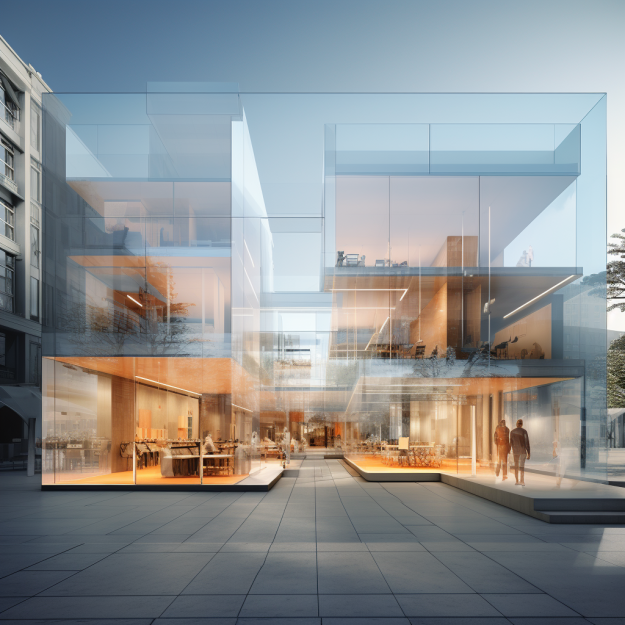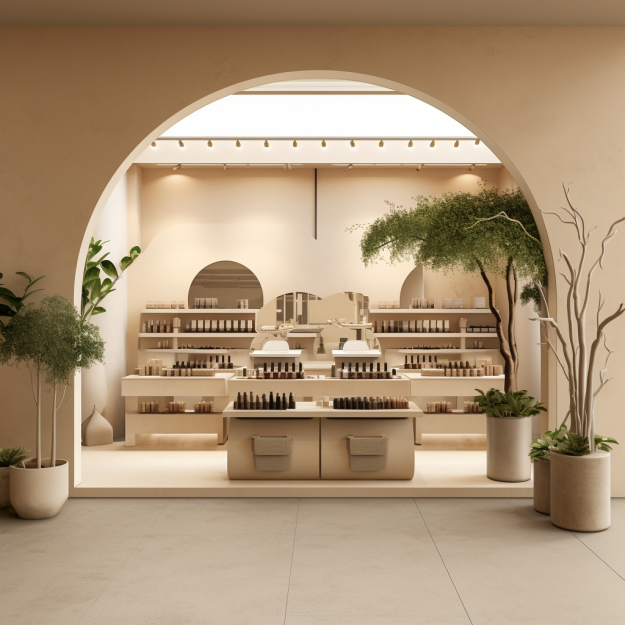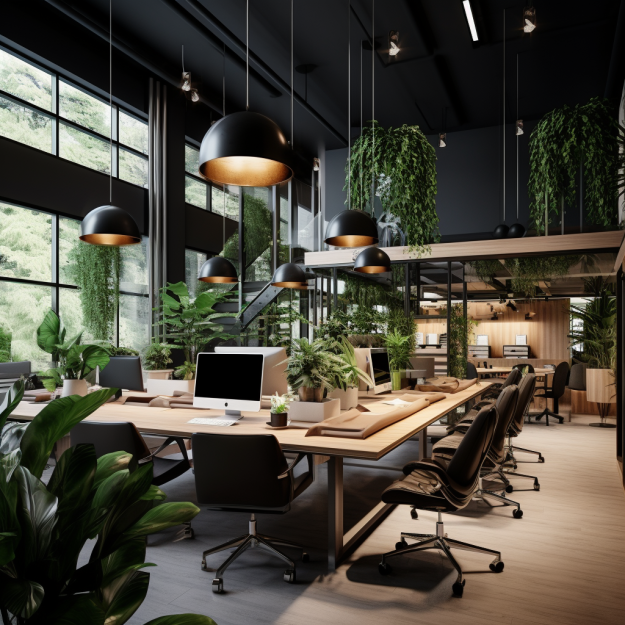The blurring boundaries between Office and Retail spaces
Throughout the most recent years, the commercial real estate landscape has witnessed a fascinating phenomenon: the gradual melting of boundaries between the way architecture approaches the office and the retail world.
In the past, office spaces were often characterized by extremely rigid and almost aseptic layouts, where closed offices and hierarchical structures dominated the landscape, with a limited number of spaces dedicated to collaboration and communication among employees.
At the same time, traditional retail spaces were often characterised by static layouts divided into specific sections, as the main focus was on finding the best way possible to display products and maximize the inventory.
Today, we are witnessing a massive change in the way these environments are perceived, as the emphasis is moving towards concepts like flexible designs and flexible layouts, that can better allow displays to be changed and spaces to adapt to the most different needs.
More Insights

Allure is thrilled to announce that Jérémie Roncoroni officially joined the team in his role of Project Director!
Allure is thrilled to announce that Jérémie Roncoroni officially joined the team in his role of Project Director!With an illustrious career of more than 15 years in project leadership, Jérémie brings a wealth of knowledge and leadership to our organization.As a global...

Allure is thrilled to announce that Grégoire Beuriot officially joined the team in his role of Principal Client Advisory!
Allure is thrilled to announce that Grégoire Beuriot officially joined the team in his role of Principal Client Advisory! Grégoire is an expert in real estate consulting with over 15 years of experience. He began his career in 2007 and worked successively for CBRE,...

Within the office world, strong preferences are directed to open floor plans, shared workspaces, collaborative areas and communal spaces in order to encourage interaction, teamwork, and innovation.
In the retail sector, contemporary store designs are becoming more and more experiential: the focus is on creating immersive and memorable experiences, incorporating interactive displays, digital technologies, and sensory elements to engage customers and encourage a connection with the brand itself.
In a nutshell, this convergence is reshaping the way we perceive commercial spaces.
Layout designs are now aimed at accommodating multiple activities and preferences: the main characters are movable fixtures, modular displays, and adjustable shelving systems that allow for quick and easy reconfigurations. This kind of flexibility enables, for example, to change layouts for seasonal displays, pop-up shops, or special events, within the retail sector, while it allows easy reconfigurations based on the changing needs of the employees within the workplace, encouraging a constant flow of communication and interaction.

The experience and, most importantly, the feeling that this experience creates within the end users, is the core of today’s vision when it comes to creating office and retail spaces.
This translates, for example, into prioritizing the well-being of employees by incorporating wellness-focused design elements, like natural materials, greenery, and access to natural light, together with quiet rooms, meditation spaces, and dedicated areas to rest and relax, aimed at improving the mental well-being and convey a sense of “home” within the office: nowadays, instead of trying to fit as many people as possible into the space, tenants are focusing on making those spaces more welcoming for the people who actually inhabits them.

With regards to the retail environment, the experience is made available through the story conveyed by the space: retail interiors are, in fact, designed with a specific storytelling in mind, aimed at bringing the brand’s identity to life. Concept stores, pop-up shops, and flagship stores are conceived as “destination spaces” that create immersive environments and evoke emotions, generating stronger connections with customers through unique aesthetics, thematic elements, and curated displays.
Of course, one of the driving forces behind this merge between the office and retail design layouts is the evolving nature of consumer behavior: the rise of e-commerce and remote work, among the main features of the digital age we are living right now, have altered the way people shop and work, and as a result, technology plays a vital role in modern retail and office design.

Hence, retailers have been forced to adapt their strategies and focus on personalised in-store experiences to attract customers: tools like interactive screens, augmented reality experiences, mobile applications and smart fitting rooms have been introduced to enhance the shopping experience, while retailers are leveraging data analytics to personalize the offer and create targeted marketing strategies. Simultaneously, office spaces have begun incorporating the latest technology tools to align with the new ways of working and allow employees to maximise their performance.

Another important common element between these two environments, is the spread of lighter colors: higher preferences are going towards mixtures of neutral shades that can provide a sense of calmness and are connected to nature, mixed with some pops of color that serve as cheerful and positive touches. Also, color helps companies to stay on brand, and many layouts are focusing on finding unique ways to incorporate the company’s logo, or brand colors into the design of their space, including colored furnishings, pillows, walls sections or even floorings.
In conclusion, the design concepts of office and retail spaces is evolving to adapt to the changing needs and preferences of their inhabitants, and the blurring boundaries between the two reflect the changing points of view of workers and consumers’ behavior to create more engaging environments that are aligning to the expectations of their users. Of course, with big changes come many challenges, but the convergence of these sectors presents exciting opportunities to redefine the way we live, work, and engage with commercial spaces.